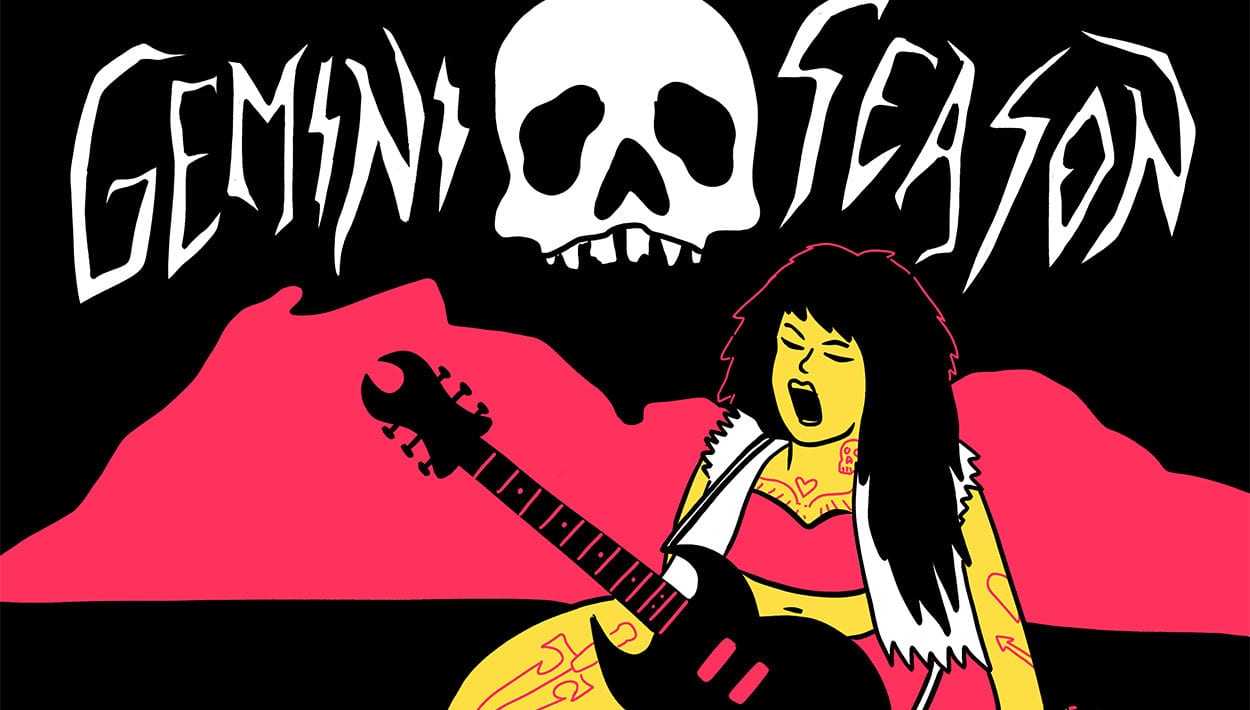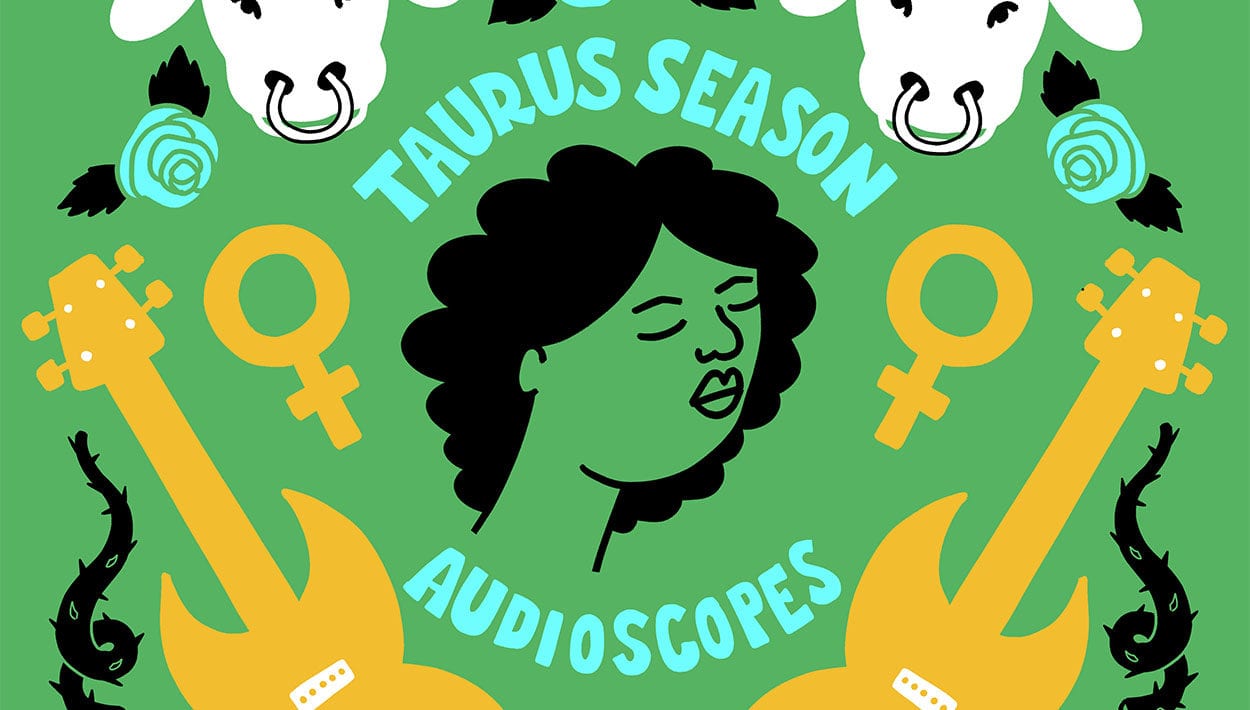Retracing the History of the Steel Guitar and the Shredders Who Shaped It
This feature originally appeared in She Shreds Issue #13, which was released in September, 2017.
Before the downtown St. Louis Millennium Hotel closed its doors for good in 2014, awards from the prestigious Steel Guitar Hall of Fame were tightly affixed to the slowly crumbling walls. The coveted bronze plaques, with brief bios and relief portraits of over six dozen inductees, filled the space to the brim.
With a closer scan, you might notice it took three entire decades before Barbara Mandrell became the only woman steel guitar player to claim her stake in the Steel Guitar Hall of Fame when she was inducted in 2009. The steel guitar has become associated with country music as its signature howl, and Mandrell is one of the genre’s many influential pioneers. The instrument is most often laid horizontally on the guitarist’s lap and played by plucking the strings with one hand while pressing a smooth, hollowed metal bar down on the strings with the other hand to change the pitch. Because of its method of play, it’s known colloquially as the lap steel guitar (meanwhile, the pedal steel guitar is also played horizontally but its large frame is most often held up by legs and the tone is changed with pedals and levers).
The steel guitar was developed on the islands of Hawaii before its twangy resonance of the became associated with the sounds of American roots. In the mid-1880s, according to folklore, an 11-year-old Hawaiian schoolboy named Joseph Kekuku was strolling along a set of railroad tracks, Spanish acoustic guitar in hand, when he found a loose bolt in the street. He discovered that when applying just the right amount of pressure to his guitar, a ghostly, heart-wrenching wail reverberated. By the 1920s, this style had taken over Hawaii, and musicians from across the mainland flocked to adopt the tricky technique, resulting in the recording of the first country music songs featuring the Hawaiian guitar.

With amplification thrown into the mix in the 1930s, the steel guitar eventually became the first manufactured electrified string instrument. Over time, it would serve as the foundation for a multitude of creative evolutions, as made evident by the addition of multiple necks or the invention of a frame with pedals for playing while standing.
Despite the widespread, historical reach of the steel guitar craze across the nation, women steel guitarists often lack recognition for their contributions. This disparity becomes even more obvious when narrowing it down to women of color, despite the instrument’s island origins.
In April, we published an article on our website that detailed the contributions of Annie Kerr, the first professional Hawaiian woman steel guitarist and frontwoman of an all-woman band. Below is a list of ten additional women steel guitarists in the U.S. who pioneered and mastered the instrument. While a few of these guitarists are well-known household names, there are far more who deserve acclaim. The absence of adequate archiving and preservation has made it so that the legacies of most of these women are currently preserved in the depths of the internet by fervent steel guitarheads and their internet fan forums.

Barbara Mandrell
A professional musician since the age of 11, Barbara Mandrell is one of the most successful vocalists in country music and is known as the “Sweetheart of Steel.” The Texas-born musician has received numerous accolades during her career, including seven American Music Awards, nine Country Music Awards, spots in the Country Music, Steel Guitar, and Musicians Halls of Fame, and two CMA Entertainer of the Year awards—making her the only woman country musician to do so. In addition to plucking on the steel guitar, Mandrell is also proficient at playing the accordion, saxophone, Dobro, and banjo. She retired in 1997.
Cindy Cashdollar
Raised in the small town of Woodstock, New York, Cindy Cashdollar’s resume is lengthy and well-decorated. Making history as the first female inductee in the Texas Steel Guitar Hall of Fame in 2011, Cashdollar paid homage in her acceptance speech to her mentor, steel pioneer Marian Hall, who is credited with bringing the sounds of country swing to the West Coast in the 1950s and played on a variety of country TV shows like Town Hall before she passed in 2008. While playing with the country band Asleep at the Wheel for nearly a decade, Cashdollar earned five Grammys as well as a place in the Texas Music Hall of Fame in 2012. She’s made a lifetime of plucking professionally from lap steel guitar to the Dobro and has shared her extensive knowledge by way of a four-series instructional DVD set she issued in the early 2000s. She continues to tour extensively today, and has played in the bands of Bob Dylan, Van Morrison, and Ryan Adams.

Tsianina Redfeather Blackstone
Before country music co-opted the steel guitar, a youthful Tsianina Redfeather Blackstone of the Creek and Cherokee tribal nations was captured on film playing the Hawaiian-style steel guitar to an intimate audience of soldiers in 1918. It’s speculated that this footage is the oldest known recording of this style of steel guitar, and a clip of it can be found on YouTube. Gaining notoriety for her velvety mezzo-soprano voice, Blackstone continued touring as a professional singer and musician for decades, before retiring in 1935. She later died in 1985 at the age of 102.
Kaki King
In the 14 years since Kaki King released her first album, the guitarist and composer has garnered a cult following for her bold, innovative sound and continued authenticity. Implementing tricky techniques, like high-speed guitar fanning and a multitude of open tunings, King has become synonymous with experimentation. The lap steel guitar made its debut on her sophomore release, “Legs To Make Us Longer.” It was her third album, …Until We Felt Red, where King found her signature, loop-heavy sound. In addition to her musical releases, the Atlanta-born artist has produced scores for numerous popular films and television shows, such as Twilight and Into the Wild.

Dr. Kamala Shankar
Born in Tamil Nadu, India, Dr. Shankar was introduced to music at four years old, when she began taking classical Hindu vocal classes. At 12, she earned a Sangeet Prabhakar, also known as the equivalent to a Bachelor of Music. By 1998, Dr. Shankar earned a doctorate degree in Hawaiian guitar—the first of its kind—and her immense love for the Hawaiian steel guitar inspired her to design a guitar, which was made three years later. Dubbed the Shankar Guitar, the instrument is a unique hybrid between the Indian sitar and the Hawaiian lap steel. She continues to tour and teach in India and abroad, and in 2013 she became the first slide guitarist to receive the prestigious Rashtiya Kumar Gandharva Samman National Music Award.
Donna Hammitt
Well known in tight-knit country steel guitar fan communities, Donna Hammitt began playing professionally as a teenager in the Knoxville area. At 14, Hammitt performed on the country music programming broadcast Tennessee Barn Dance, and played so well that she was invited back regularly for a full year. In college, she studied commercial music at Belmont University in Nashville—she became the second-ever steel guitarist to do so in the discipline and graduated cum laude in 1994. During her career, she shared bills with the likes of Rhonda Vincent and Jimmy Day.

Mikilani Fo
Although Mikilani Fo was a pioneer of steel guitar and one of the very first professional women players, further biographical details of her life are scarce. Luckily, Lorene Ruymar, a steel guitar player and enthusiast who founded the Hawaiian Steel Guitar Association in 1985, authored the comprehensive anthology, “The Hawaiian Steel Guitar and Its Great Hawaiian Musicians,” which provides a snippet on Fo’s life. Taught to play steel guitar by her father, Fo had an affinity for string instruments and excelled in ukulele, bass, and guitar, among others. At 35, the Hawaii native tragically died on stage during a performance in Reno, Nevada. You can find fan uploads of Fo’s tracks on YouTube.
Owana Salazar
A descendant of Hawaiian royalty, Owana Salazar was raised surrounded by music and history. At age 37, she began studying steel guitar, taking formal lessons from Jerry Byrd, a musical mastermind with a plaque in the Steel Guitar Hall of Fame. She became the first woman student graduated by Byrd in 1992, and in the years since, her signature blend of traditional Hawaiian music with contemporary jazz has earned her several honors, including a handful of Hawaiian Na Hoku Hanohano Awards. When not making music, Salazar dedicates her time to advocating for Hawaiian independence and sovereignty.
Sarah Jory
Born in Berkshire, England, Sarah Jory has been plucking steel since childhood. At the young age of five, she received her first steel guitar and quickly mastered it—so much so that by age 11 she released her first full-length album, Sarah’s Steel Line, in 1980. Two years later, Jory began performing extensively at steel guitar events, including Scotty’s renowned (and now defunct) International Steel Guitar Convention in St. Louis. Over the span of her active career, she has maintained steady album releases and accolades, including Female Vocalist of the Year by the British Country Music Association for nine consecutive years.

Letritia Kandle
When researching pioneers of electric string instruments, one will be hard pressed to find a name that doesn’t belong to a cis man, but by 1937, Chicago-based guitarist Letritia Kandle was already making history when she debuted the design of her elaborate console steel guitar. Known as the Grand Letar, the multi-neck, 26-string steel guitar was a literal dream come true; After she envisioned it during a deep sleep one night, Kandle’s father helped construct her vision. Even more impressive than its necks and two embedded speakers was a 120-bulb, four-color built-in light show that danced joyfully during sets. After contemporary steel guitar collector Paul Warnik discovered the creation, he contacted Kandle and restored the instrument to display in 2008 for its first public showcase in over 55 years. Kandle died two years later at 94 years old.













Comments
WOW!!! ?❤️❤️??
Comment by Gary j on January 16, 2018 at 4:31 amamazing
Comment by ronald vaughan on February 13, 2018 at 5:39 pmSuch the great post here you can visit here and see the many stage to amazing play yahtzee online free this is your golden chance for the create full entertainment so thanks for the visit here share to all friends.
Comment by play game on May 9, 2018 at 10:29 pmVery impressive. Today,a man called “Lion” Kobayashi has been teaching a lot of new female steel guitar players.
Comment by Ronald Vaughan on June 23, 2018 at 4:52 pmSusan Alcorn is someone who belongs on your list- please check her out. She’s very accomplished and recognized as a player, a true pioneer of the instrument, and an excellent composer of non-traditional music. She is actively touring.
Comment by Brosh on July 20, 2018 at 8:49 amShe definitely is NOT a pioneer of the instrument, and for the life of me I can’t understand why a person who plucks a string and let’s it ring indefinitely should have noteriety with the instrument. But that’s just my opinion.
Comment by John Buckles on November 2, 2019 at 8:30 amAloha so glad to see steel guitar artists getting acclaim. Alan Akaka has taught many female next gen players and they perform at steel guitar festivals across the states check out himele.org, I hope to continue this tradition by teaching at Waikiki this year.
Comment by Dan Tremblay on September 21, 2018 at 5:03 amMahalo
What about Teaa Goins? No mention of her here, and I understand that she’s a rising star with the pedal steel guitar.
Comment by Jeff Tappan on January 18, 2020 at 10:40 pm[…] lap steel guitarists” and didn’t see a single black woman. Googled some more and this article showed a more diverse list, still no Black/African. There are many other types of guitars and […]
Pingback by AfroQueen of the LapSteel Guitar? | TOSINGER'S BLOG on June 25, 2020 at 3:21 pmIn 2021,in Hawaii,a young lady named Malie Lyman is making history playing the lap steel guitar.
Kind of like MIKILANI FO all over again….
Comment by Ronald Vaughan on May 7, 2021 at 4:26 pm